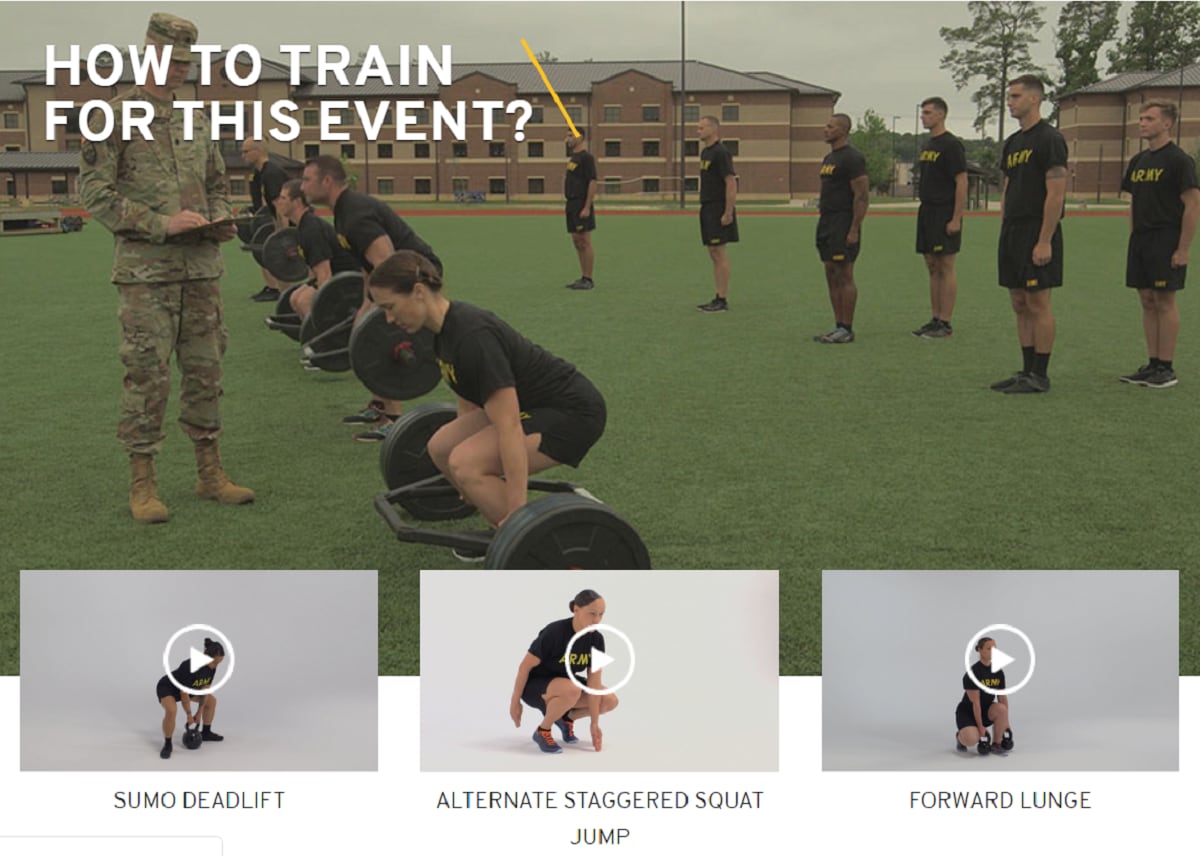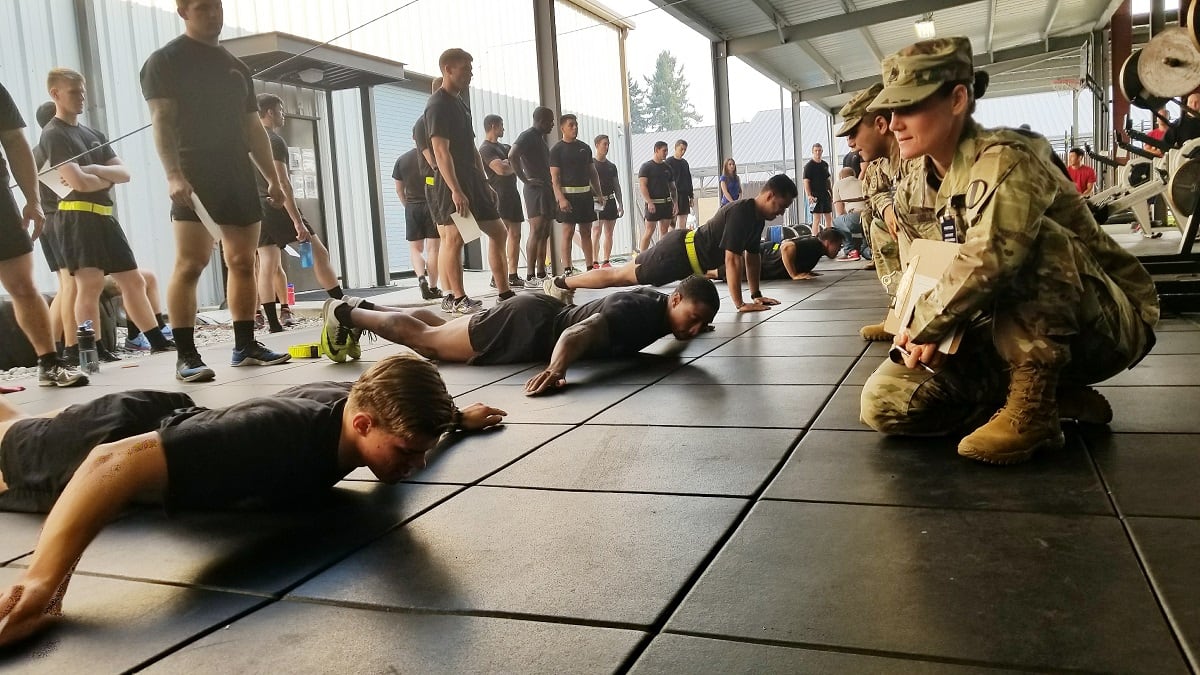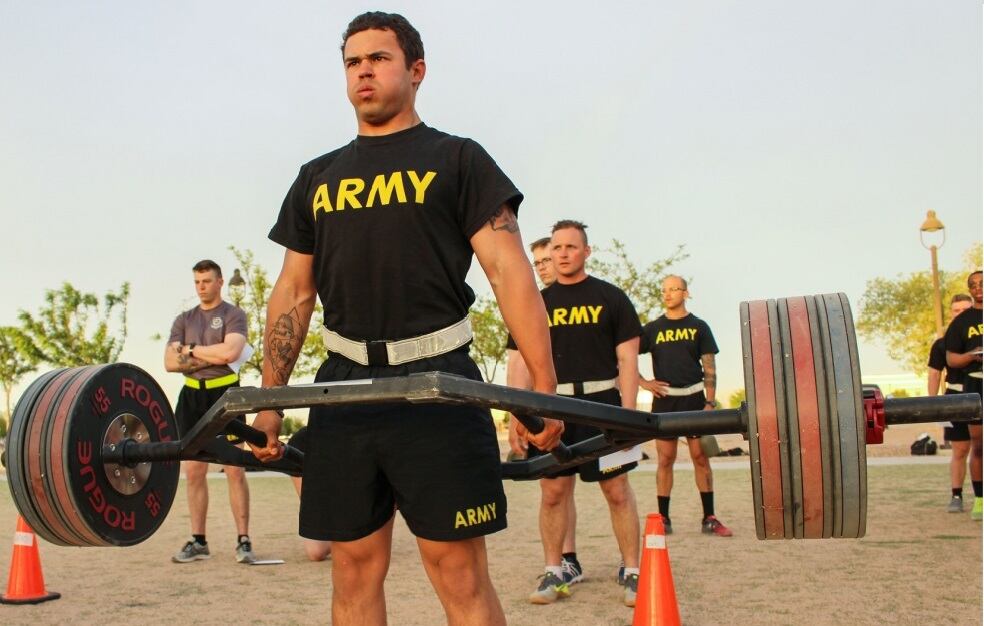The Army announced Friday morning that it is officially kicking off the transition from its pilot phase of the Army Combat Fitness Test to initial operating capacity.
The test standards are officially released, and can be viewed here. In order to max out the gender-neutral, six-event test, a soldier would need to lift 340 pounds on the deadlift, hit 12.5 meters on the standing power throw, perform 60 hand-release push-ups, make a time of 1:33 minutes on the sprint-drag-carry, perform 20 leg tucks on a pull-up bar and run two miles in 13:30 minutes.
The Army also released a video showing the modified ACFT for soldiers on permanent profiles that includes three aerobic test events.
The test is just for practice this year — unless you’re arriving to basic combat training beginning Oct. 1. All new officers and enlisted soldiers coming into the Army after that date will be training for and required to pass the ACFT before they graduate and report to the operational force, according to Maj. Gen. Lonnie G. Hibbard, commander of the Center for Initial Military Training.
“I don’t think it will impact graduation rates; It’s really going to impact how we train," he said. "We’re taking a high school student and transitioning him into a soldier, we just have to make sure he is competent in the ten components of physical fitness to be successful on the ACFT.”
Over the course of the next year, all soldiers in the active-duty Army will take two ACFT diagnostic tests, while soldiers in the Guard and Reserve components will take one diagnostic test.
Starting in October 2020, one year from now, the ACFT will become the Army fitness test of record.
After collecting data from 63 test battalions this past year, “now we’re just telling the Army — all three components — that you need to start training for the ACFT," Hibbard said.
The practice tests will inform soldiers where their strengths and weaknesses are and teach soldiers how they need to change their Army physical readiness training, or PRT, to better prepare. The diagnostic tests should help allay concerns that some in the force have about the new test, which focuses on functional fitness and core strength using exercises like the hex bar deadlift and knee tuck.
Scary slides
A leaked document was posted on social media this week showing a roughly 70 percent pass rate for men and an 84 percent failure rate for women, with many of the failures attributed to the leg tuck event. The slides, which came from Army Forces Command and not CIMT, documented testing conducted by 11 of the 63 battalions tested this past year.
“That was a snapshot from those units,” Hibbard said. “I cautioned the Army senior leaders when I did a brief with the vice three weeks ago because when we start aggregating the data, people are going to make conclusions. The problem is, most of the time, when they did the diagnostic test, this is the first time they’ve ever done it.”
A lot of units hadn’t trained for the ACFT prior to their first practice test, Hibbard warned. Most of the time, units were briefed on the exercises involved and then they scheduled the test.
“Most of the naysayers and the comments we get are from people who really haven’t taken it,” Hibbard said.
More useful data will begin to populate over the next year, when the entire Army is gauging itself by the new standard.

Another common fear voiced about the new test is that it will increase injuries among the force.
“We have not seen an increase in injury rates based on the ACFT and the test battalions we’ve done,” Hibbard said, noting that on the deadlift in particular, a hex bar was chosen over the traditional straight bar in order to reinforce good form and curtail injures.
“That’s also the reason we put it as the first event,” he added. “You haven’t expended your energy or tired out your core.”
For Hibbard, that dials into another important part of the test: It’s all about “energy management.”
“At 52 years old, I don’t have the energy I used to and so I focus on my strength and try to make up the points where I can on what I’m still good at," he explained.
Hibbard said the easiest event for him is the push-up, because that’s been part of the Army’s standards for decades.
“The hardest, even for me, is the leg tuck," he said. "Primarily because it’s working core strength that a sit-up doesn’t prepare you for, so you have to focus on that when you go to the gym or when you do PRT.”
Concerns about equipment
Many soldiers, especially on the Guard and Reserve side of the force, have voiced concerns about getting the necessary equipment to prepare for the new ACFT in time.
Those concerns are valid, Hibbard said, noting that the Army is working to address it by buying $70 million-worth of equipment that will be divvied out to units across the force in January.
The service plans for all the equipment to be in place for active, Guard and Reserve units by May. That will line up for the Guard and Reserve units going into their summer training cycles.
“We’re about three months behind where we expected to be,” he added. “We were trying to have the equipment out by Oct. 1. But you know how contracting goes sometimes.”

Soldiers don’t necessarily need equipment to train for the test. There is a cottage industry of fitness experts who have shown that core and calisthenic strength can be developed in one’s own home for relatively cheap.
Additionally, the Center for Army Lessons Learned published a manual on how to train for the new fitness test, and other Army documents also lay out ways to prepare using minimal equipment.
Ammo cans, water-filled jerrycans and sandbags, for instance, can be used as weighted items in place of a trap bar and plates, medicine balls and kettle-bells.
“I travel four days a week," Hibbard said. "I can train in a hotel with no equipment. The equipment is really only needed for the test.”
Holistic Health and Fitness
Concurrent with the new ACFT, the Army has been experimenting with a new initiative called the Holistic Health and Fitness, or the H2F pilot program.
H2F is being tested in about 30 battalions. It provides strength coaches to mentor soldiers and watch their form, as well as offer nutritional advice from dietitians and recovery assistance from physical therapists.
Army Chief of Staff Gen. James C. McConville wants H2F to become an Army-wide program.
“It’s an innovative way of focusing on the mind, the body, and a way of training soldiers through physical readiness, appropriate nutrition, sleep and other preventive care as we look at how we’re changing the culture of physical fitness,” Hibbard said.
Pushing H2F out to more battalions will happen incrementally over the next five-plus years, according to Hibbard.
Kyle Rempfer was an editor and reporter who has covered combat operations, criminal cases, foreign military assistance and training accidents. Before entering journalism, Kyle served in U.S. Air Force Special Tactics and deployed in 2014 to Paktika Province, Afghanistan, and Baghdad, Iraq.





